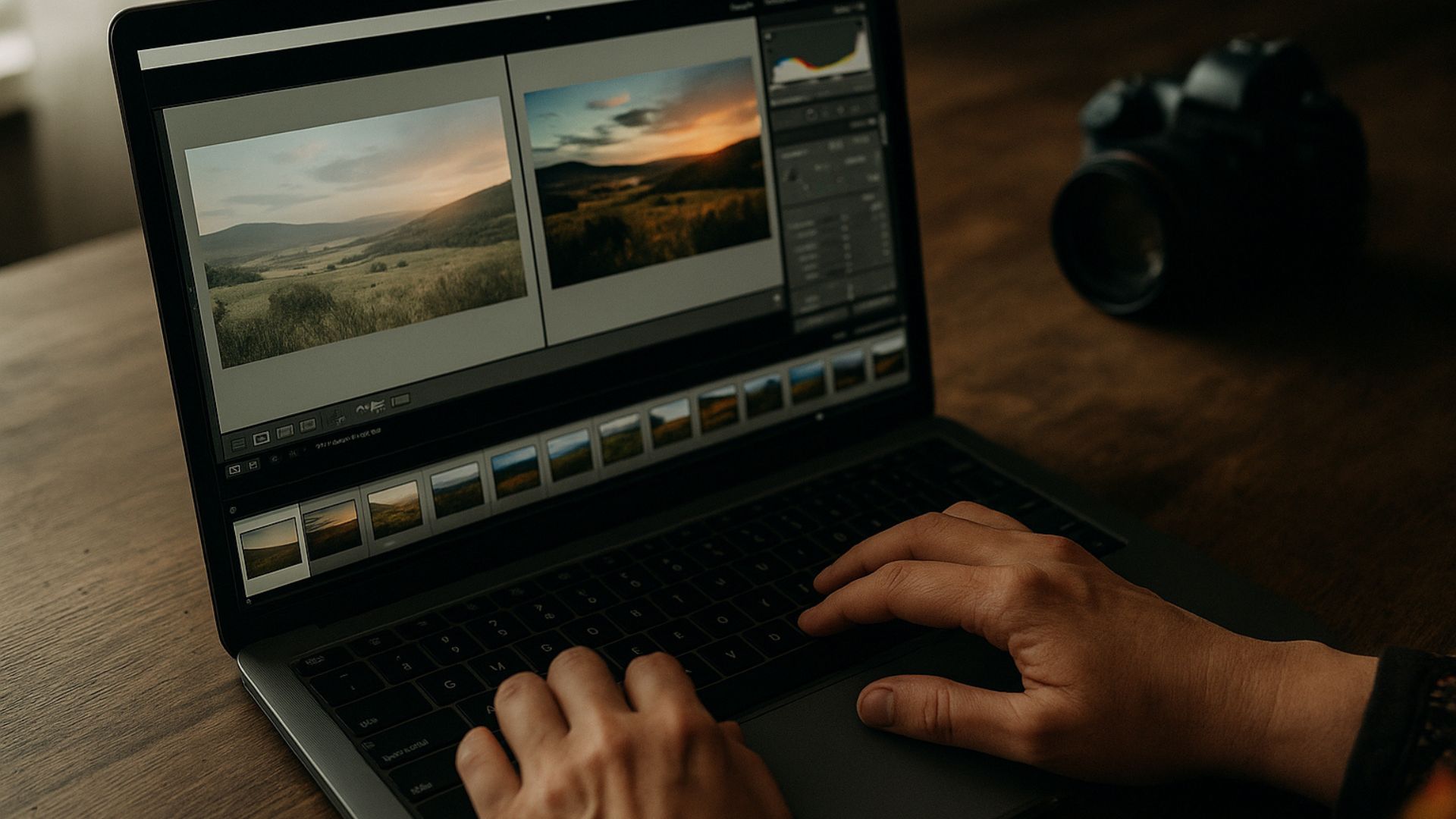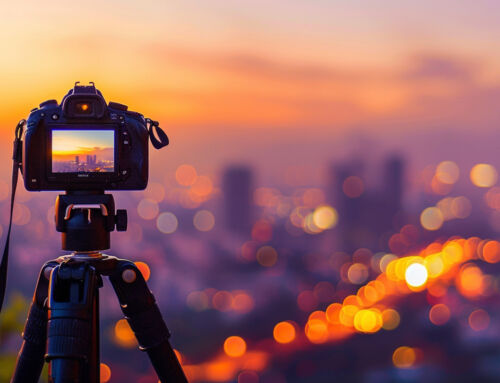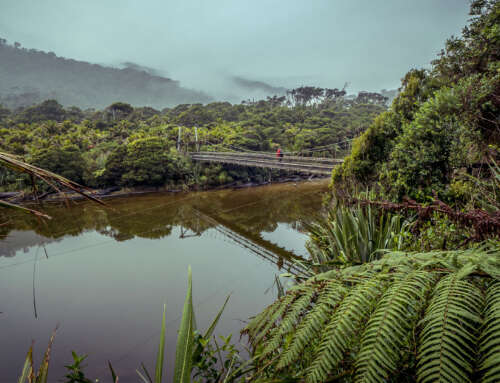I remember the first time I opened a folder of RAW files in Lightroom. What I saw on my screen were flat and lifeless images, nothing like the golden evening sky I had captured.
This is what many beginners face when they need to fix flat photos in Lightroom, and it can feel disappointing if you do not know what is happening.
The truth is, flat photos in Lightroom are normal and they are not mistakes. With a few Lightroom editing tips you can quickly transform them into vibrant and professional-looking images.
Flat photos in Lightroom happen because cameras capture RAW files that hold a lot of information but very little punch. RAW files give you flexibility but the trade-off is a lack of contrast, vibrance, and depth. Instead of a finished photo, you are given a starting point that needs development. Once you know which adjustments matter most, you can fix flat photos in Lightroom with ease.
1. Adjust the Contrast and Blacks
One of the fastest ways to fix flat photos in Lightroom is to add contrast. In the Basic panel, pull the Blacks slider down until shadows gain weight and definition, then push the Contrast slider upward slightly. This creates separation between light and dark areas and adds a three-dimensional feel to your photo.
2. Balance Shadows and Highlights
Shadows and highlights shape the mood of a photo. Lowering the Shadows a little adds depth, while lifting the Highlights brings back sparkle in the brighter areas. This simple balance is one of the most useful Lightroom editing tips and makes a photo feel instantly stronger.
3. Add Definition with Clarity or Texture
Flat photos often lack detail. Increasing Clarity adds midtone contrast which makes edges crisper and more defined. Texture works especially well for landscapes because it enhances the surfaces of rocks, trees, or fabric without making the entire image look harsh. Both of these tools bring definition back to soft or lifeless photos.
4. Use Vibrance Instead of Saturation
Many beginners try to fix dull photos by raising Saturation too high. This usually makes colours look fake and unnatural. Vibrance is a better option because it targets muted tones and leaves skin tones and already rich colours alone. Increasing Vibrance gently is one of the best ways to make photos pop without going too far.
5. Apply a Subtle Vignette
A photo can feel flat if the viewer’s eye is not drawn anywhere specific. Adding a vignette darkens the edges of the frame and guides attention toward the centre. This small change helps focus the story of the image and adds an extra layer of depth.
Going Beyond the Basics
These five steps are a great starting point, but to really master editing it helps to understand why photos look flat in the first place. RAW files are designed to give photographers control. What looks like a dull photo on screen is actually full of hidden information. Think of RAW files as digital negatives. Just like film needed development in a darkroom, RAW images need development in Lightroom.
One of the most powerful tools for adding depth is the Tone Curve. By creating a gentle S-shape, you can make shadows richer and highlights brighter in a natural way. For even more creativity, adjust the Red, Green, and Blue channels separately to fine-tune colours and create cinematic effects.
Local adjustments are also helpful when fixing flat photos in Lightroom. Instead of changing the entire image, you can target specific areas. Brightening a subject’s face, adding clarity to a mountain peak, or darkening a sky are all examples of selective edits that add drama and focus.
Another panel that many beginners skip is Calibration. By adjusting the primary colour channels here, you can subtly enhance the mood and richness of your edits. It is often the missing step that makes an image feel polished.
Presets as a Learning Tool
Presets are often misunderstood. Some people expect them to fix every photo instantly while others see them as a lazy shortcut. In reality, presets are best used as a guide. A good preset can add contrast, vibrance, and style immediately, but the real value comes from looking at the settings behind the preset. Notice how the sliders move, how the tone curve is shaped, and what changes were made. By studying presets you can learn editing decisions and eventually create your own style.
Building Consistency
Flat photos are frustrating, but fixing them is not just about one image. It is also about building a consistent editing style. If one photo looks flat, another oversaturated, and another too dark, it is difficult for your portfolio or Instagram feed to feel cohesive. Consistency makes your work look intentional and professional. By applying these Lightroom editing tips regularly, you will start to build a style that feels like yours.
Flat photos in Lightroom are not failures. They are raw material waiting for your creativity. By adjusting contrast, balancing shadows and highlights, adding definition, boosting vibrance, and finishing with a vignette, you can turn disappointing files into images full of depth and colour. With practice, these steps will become second nature. One day you will look back at those flat photos and see them not as mistakes but as proof of how far you have grown as a photographer.
Want more tips like this straight to your inbox? Join my newsletter here for editing tutorials, presets, and creative tools. Support my work or grab more tutorials on Buy Me a Coffee.
Do you want to learn more?? You’ll also find my courses, Edit Like a Pro, Canva Crash Course, and Freedom Fund, designed to help you grow your skills and freedom.






Leave A Comment